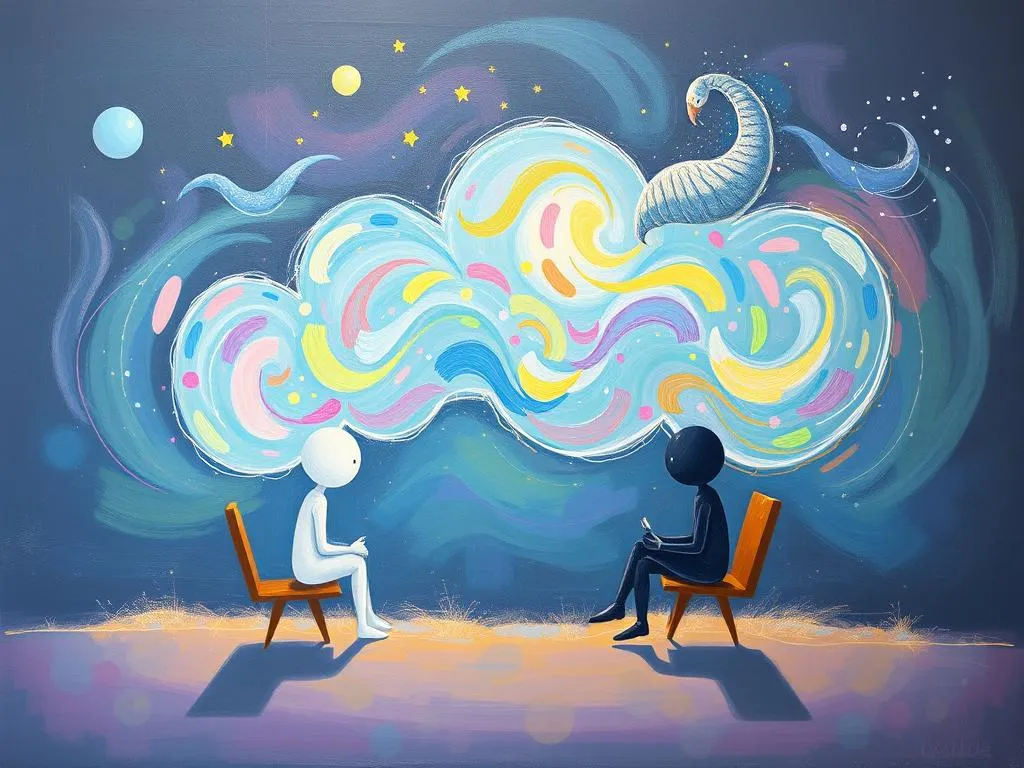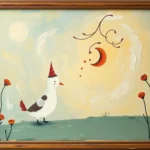
Have you ever woken up from a dream that felt so vivid, so real, that it lingered in your mind long after you opened your eyes? Perhaps you found yourself in a surreal landscape, confronted by enigmatic symbols or familiar faces that seemed to hold a message just for you. Dreams, as ancient as humanity itself, act as windows into our subconscious, offering glimpses into our fears, desires, and unresolved conflicts. They can be profound teachers, guiding us through the labyrinth of our thoughts and emotions.
In this article, we will embark on a journey of dream interpretation, exploring the rich tapestry of symbols that populate our nightly narratives. Together, we’ll dive into the meanings behind these symbols, examine real-life scenarios that reflect our dreams, and discover how to harness their wisdom for personal growth. So, grab a comfy seat, and let’s delve into the fascinating world of dreams!
Dream Symbols: The Hidden Language of the Subconscious
When it comes to dreams, symbols serve as the language of our subconscious mind. Each dream element can represent a different aspect of our waking life, and understanding these symbols can unlock the messages hidden within our dreams. For instance, water often signifies emotions and the flow of life, while flying can represent freedom or the desire to escape from constraints.
Cultural interpretations of symbols can vary significantly. In many Western traditions, snakes are often seen as harbingers of danger or betrayal, while in some Indigenous cultures, they symbolize transformation and healing. This contrast highlights the importance of context when interpreting dream symbols.
Another common dream symbol is death, which can be alarming but is often misunderstood. Rather than signifying an end, it can represent new beginnings, transformation, or the shedding of old habits. Similarly, houses in dreams can reflect our sense of self; different rooms may symbolize various aspects of our personality or life experiences.
As we explore the meanings behind these symbols, it’s essential to remember that your personal associations with these symbols are vital. What does a rose mean to you? A storm? By reflecting on your unique experiences, you can tailor interpretations to suit your life context, allowing for a deeper understanding of the messages your dreams convey.
Dream Experiences: Tales from the Night
Let’s connect the dots between symbols and real-life experiences. Here are some scenarios that might resonate with you, illustrating how dreams can reflect our waking lives:
1. The Tidal Wave of Emotion
Imagine you dreamt of standing on a beach, watching an enormous tidal wave approach. This dream might signify an overwhelming surge of emotions in your waking life. Perhaps you’re facing a situation that feels beyond your control, like a difficult relationship or a looming deadline at work. The tidal wave symbolizes the intensity of your feelings and the need to confront them rather than avoid them.
2. The Journey Through an Abandoned House
Picture yourself wandering through an old, abandoned house filled with forgotten treasures and dusty memories. This dream may represent your exploration of your past. Each room reflects different memories or experiences that shape who you are today. The abandonment of the house could symbolize unresolved issues that need attention or healing. Consider what each room represents in your life and how you can confront those feelings.
3. The Chasing Figure in the Dark
In this scenario, you find yourself being chased by a shadowy figure through a dimly lit forest. This dream often symbolizes avoidance—perhaps there’s a fear or responsibility you’re not facing in your waking life. The chasing figure represents your anxieties, and the darkness signifies the unknown. What are you running from? Reflect on what this figure might represent and how you can confront it.
4. The Flight Above the Clouds
Now, imagine soaring high above the clouds, feeling liberated and free. This dream often represents a sense of freedom and empowerment. You might be at a point in your life where you’re breaking free from constraints—be they personal, professional, or emotional. Take this feeling of flight as a sign that you’re moving in the right direction, embracing new opportunities and possibilities.
5. The Lost Child
Lastly, consider a dream where you are searching for a lost child. This dream may signify feelings of vulnerability or a desire to reconnect with your inner self, often referred to as the inner child. The lost child represents aspects of yourself that you might have neglected or forgotten. What parts of yourself need nurturing or attention? This dream encourages you to reconnect with those lost aspects, fostering healing and growth.
Navigating the Path of Personal Growth
Dreams are not merely whimsical tales; they can serve as powerful tools for personal development. By engaging with our dreams, we can glean valuable insights that can guide us toward a more fulfilling life. Here are some practical ways to harness the wisdom of your dreams:
1. Keep a Dream Journal
Start jotting down your dreams as soon as you wake up. Record every detail you can remember, including symbols, emotions, and any significant events. Over time, patterns will emerge, and you’ll begin to notice how your dreams reflect your waking life. This practice not only enhances your memory but also deepens your understanding of recurring themes.
2. Reflect and Analyze
After recording your dreams, take time to reflect on the symbols and scenarios. Ask yourself questions like, What emotions did I feel? What situations in my life might this relate to? By engaging in this reflective practice, you’ll start to decode the messages hidden within your dreams.
3. Explore Cultural Perspectives
Consider the cultural meanings of symbols in your dreams. Research how different cultures interpret the same symbols—this can provide a broader perspective and might resonate with you in unexpected ways. This exploration can deepen your understanding of your dreams and even open new pathways for interpretation.
4. Use Dream Work Techniques
Consider practicing techniques such as guided imagery or active imagination, where you engage with the symbols or characters from your dreams. This method enables you to explore your feelings and thoughts surrounding the dream, tapping into your subconscious for further insights.
5. Embrace the Journey of Self-Discovery
Finally, approach your dreams as a journey of self-discovery. Embrace the messages and lessons they bring, even when they are challenging. Each dream is an invitation to explore new facets of yourself, encouraging growth and healing. Remember, personal growth is a continuous process—your dreams are there to guide you along the way.
In closing, dreams are not just a series of random images and stories; they are rich tapestries woven from our experiences, emotions, and desires. By engaging with the symbols, reflecting on our experiences, and embracing the lessons they offer, we can embark on a transformative journey of personal growth. As you lay down to sleep tonight, remember that your dreams hold the keys to understanding yourself on a deeper level. Allow their wisdom to guide you, and embrace the adventure of self-discovery.
What will your dreams reveal to you tonight?







